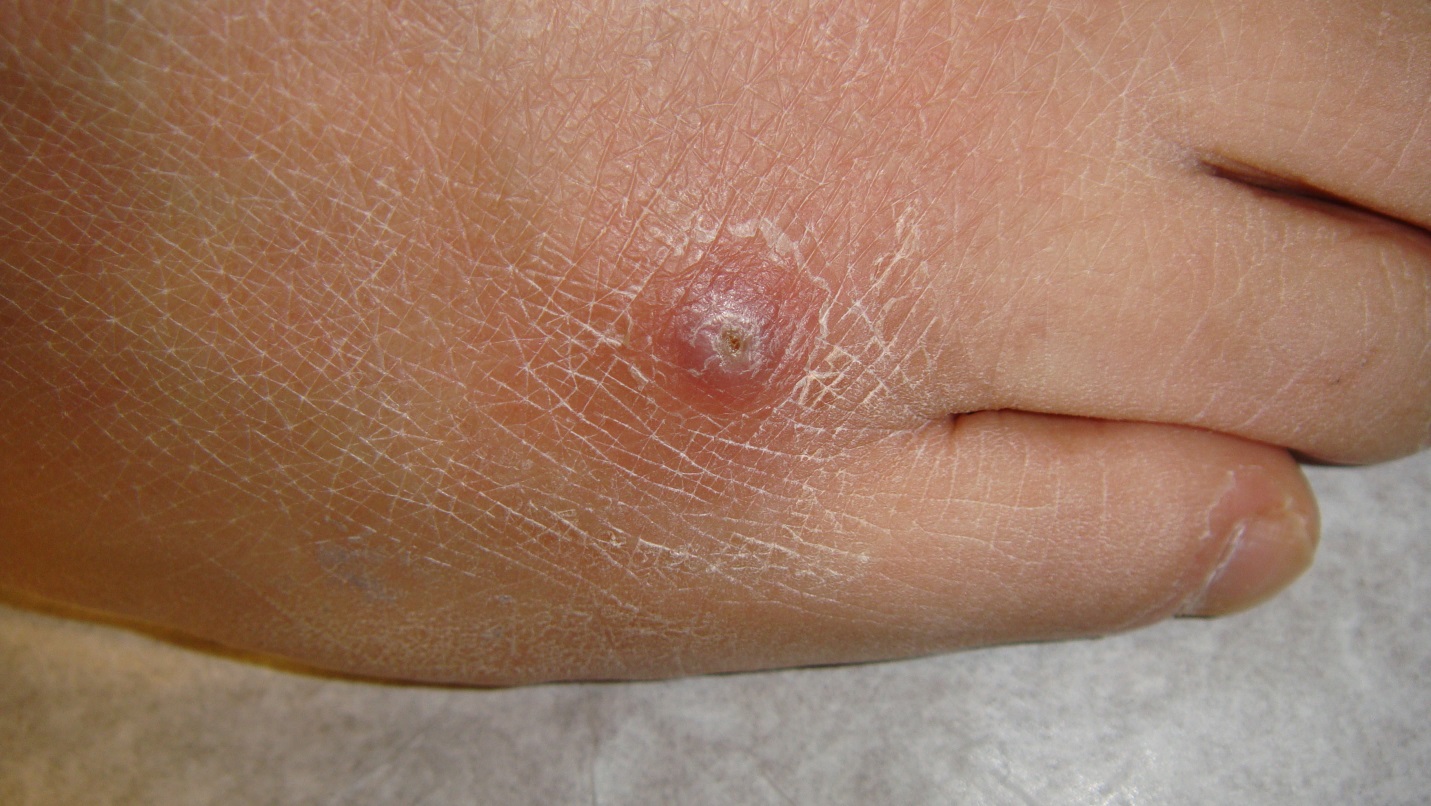
Journal of Clinical Images and Medical Case Reports
ISSN 2766-7820
Case Report - Open Access, Volume 2
Cutaneous reaction to sea urchin spines
Cassidy Johnston
Pacific Northwest University, 1622 W 7th Ave Apt. 301 Spokane, WA 99204, USA.
*Corresponding Author: Cassidy Johnston
Pacific Northwest University, 1622 W 7th Ave Apt. 301
Spokane, WA 99204, USA.
Email: cjohnston@pnwu.edu
Received : July 12, 2021
Accepted : Aug 26, 2021
Published : Aug 31, 2021
Archived : www.jcimcr.org
Copyright : © Johnston C (2021).
Citation: Johnston C. Cutaneous reaction to sea urchin spines. J Clin Images Med Case Rep. 2021; 2(4): 1287.
Clinical image description
A 35-year-old male returned from vacation in Hawaii where he went scuba diving and snorkeling. While snorkeling, he stepped on a sea urchin and sustained injuries to the dorsal aspect of his right foot. He began to swim back to shore when he felt significant pain and began removing visible spines when he reached shore. He saw a physician in Hawaii who removed remaining spines and started a treatment regimen of cephalexin 500 mg QID. Patient followed up 2 weeks later with his home dermatologist for persistent granuloma and was given 15-day course of oral doxycycline 50 mg BID with near full recovery within 2 weeks. Even physicians practicing inland need to be aware of coastal injuries and reactions as they can mimic other common skin tumors such as keratoacanthomas.

